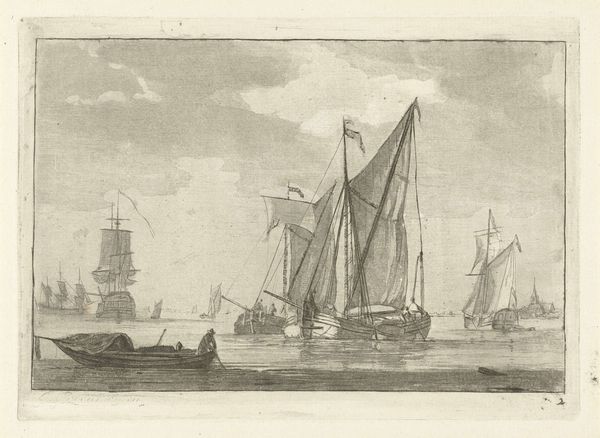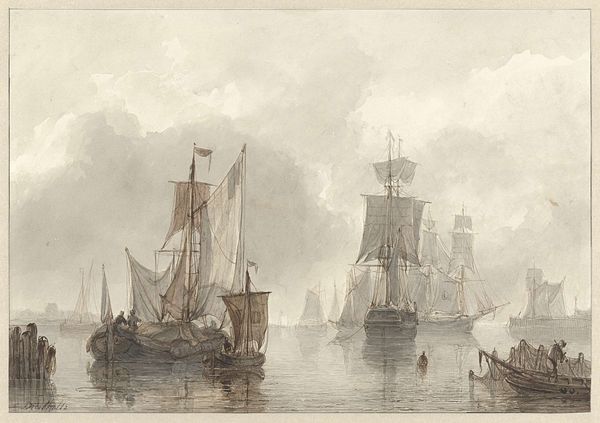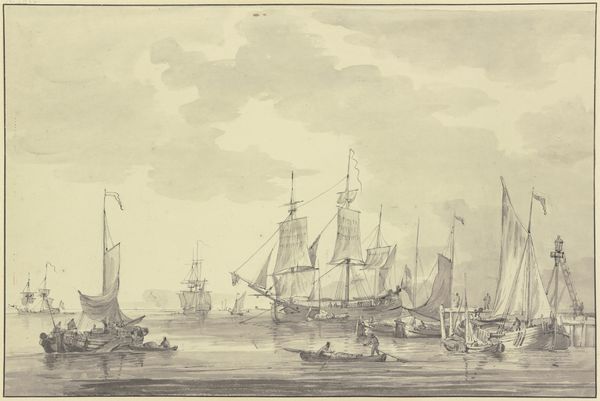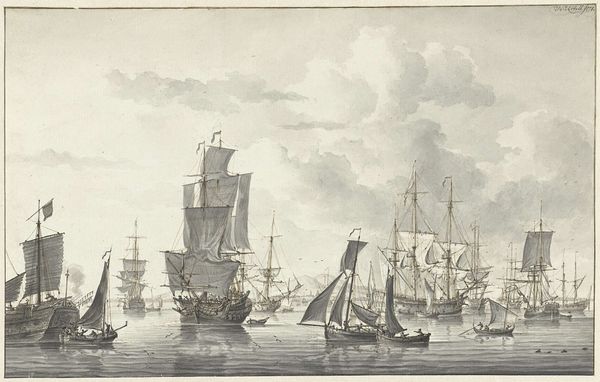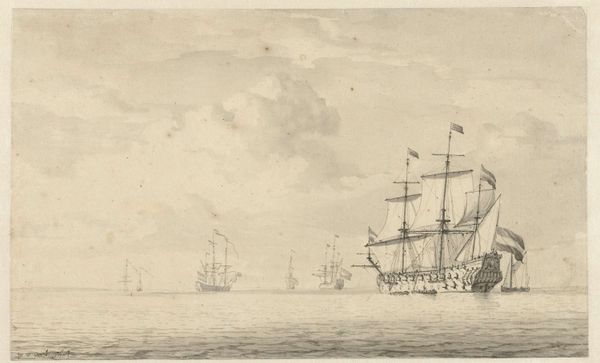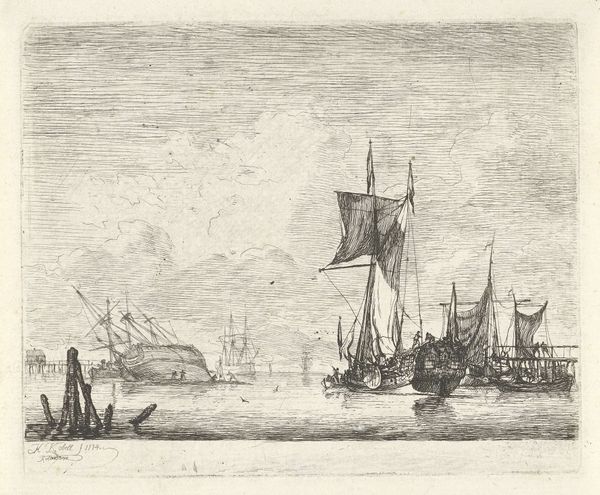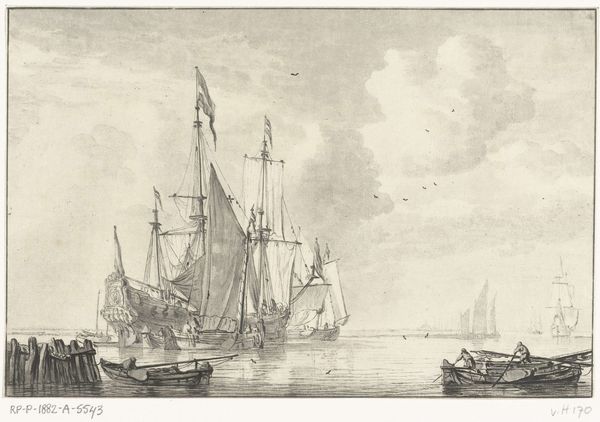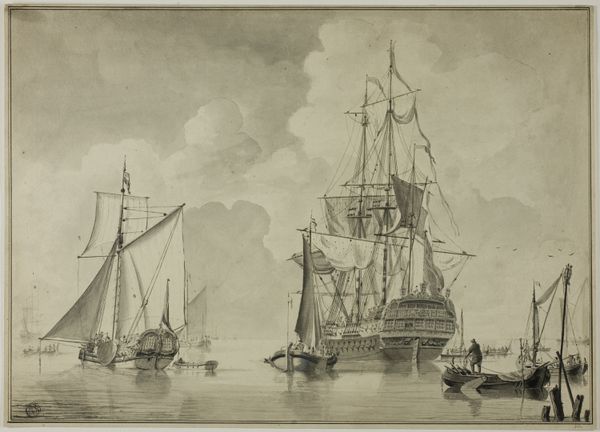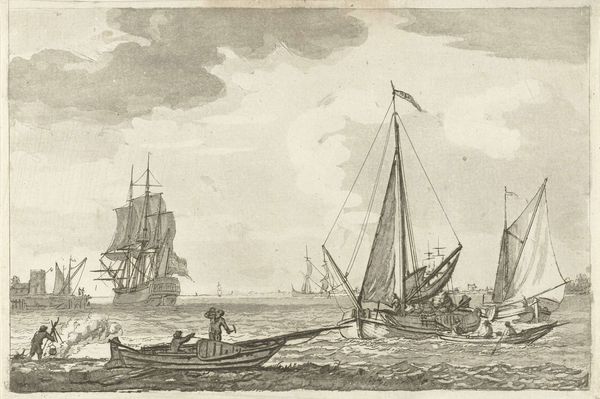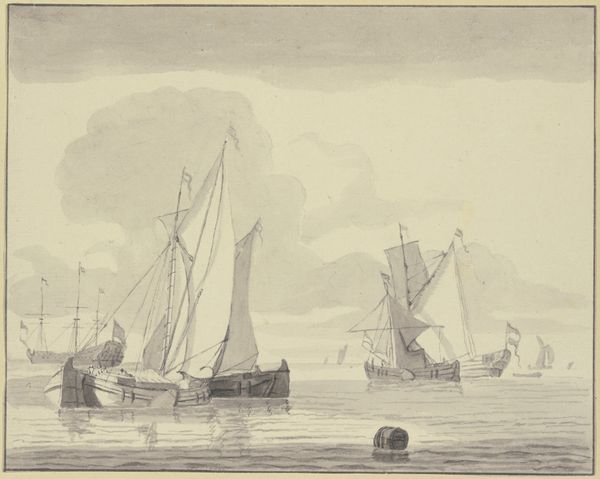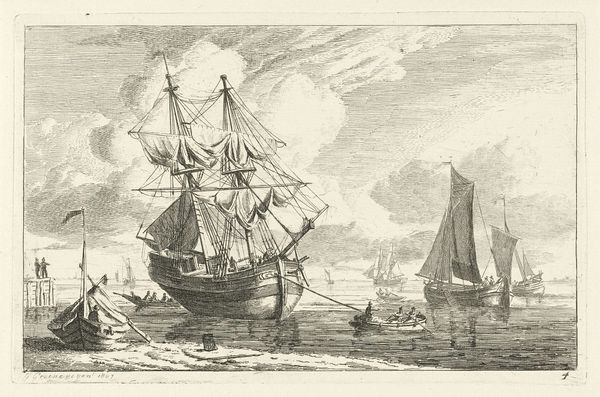
drawing, ink, pencil
#
drawing
#
dutch-golden-age
#
pencil sketch
#
landscape
#
ink
#
pencil
#
genre-painting
Dimensions: height 233 mm, width 325 mm
Copyright: Rijks Museum: Open Domain
Curator: Looking at "Schepen op kalm water" by Cornelis de Griendt, created in 1778, one is immediately struck by its serenity. Editor: Indeed. The almost monochromatic palette, created with pencil and ink, evokes a sense of calm, yet there's a hidden story embedded in the materiality of the drawing. The lines are delicate but determined. Curator: Considering de Griendt's period, this work functions beyond a mere picturesque scene. Dutch maritime power during the Golden Age had deep ties to global trade and, yes, also to colonialism. Does this placid water perhaps disguise a complex history? Editor: Precisely. The Dutch Golden Age was built upon sophisticated methods of production – shipbuilding, sail-making, navigation technologies. This drawing captures ships as both aesthetic objects, as well as vital components of global networks of labor and resources. Note the various vessels depicted – each suggests a different purpose and economic sphere. Curator: It's interesting to think about that social backdrop, isn't it? To appreciate the skill in representing these boats while also being critical of the era's inherent power structures. The choice to portray a "calm water" almost feels like an intentional distancing from the turbulent histories associated with these ships. Editor: Yes, that contrast is telling. The calmness on the surface masks the active and frequently exploitative movement of goods, people, and power enabled by these very vessels. This work is more than just a pleasant genre scene; it serves as a window onto Dutch commercial infrastructure, and subsequently to its society and international standing. Curator: I agree, approaching it that way opens new interpretive paths. These images aren’t simply beautiful; they're remnants of complex political, economic, and often unequal networks of exchange. Editor: And appreciating the drawing for what it is -- paper, pencil, ink -- directs us towards thinking about those human elements as well. Drawing by drawing, brick by brick, a system came together. We cannot disconnect those practices from the drawing's inherent beauty. Curator: Reflecting on de Griendt's artwork and the narratives interwoven into it, reminds us to examine beyond the surface, and realize the deep complexity that visual serenity might mask. Editor: I agree. Paying close attention to material realities, along with social and historical factors, transforms the experience of art -- every calm water can conceal surprising depths.
Comments
No comments
Be the first to comment and join the conversation on the ultimate creative platform.
